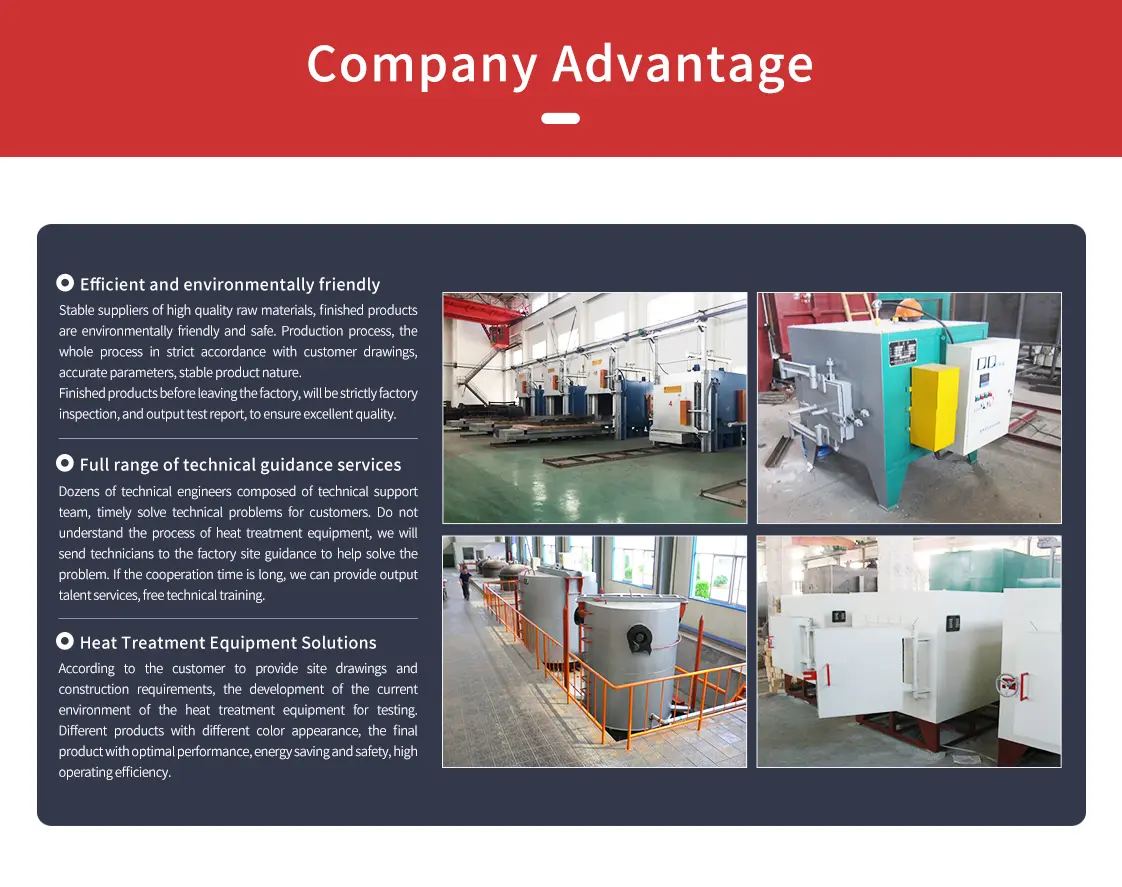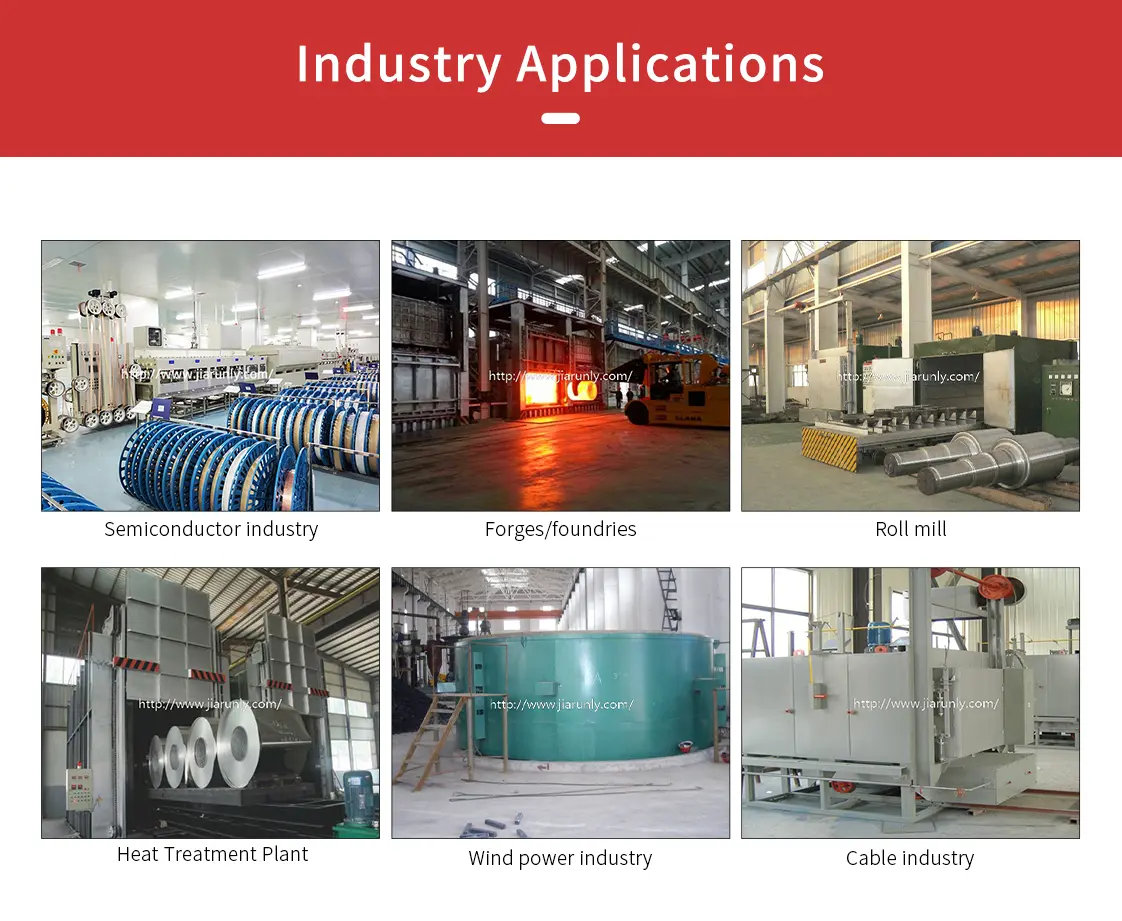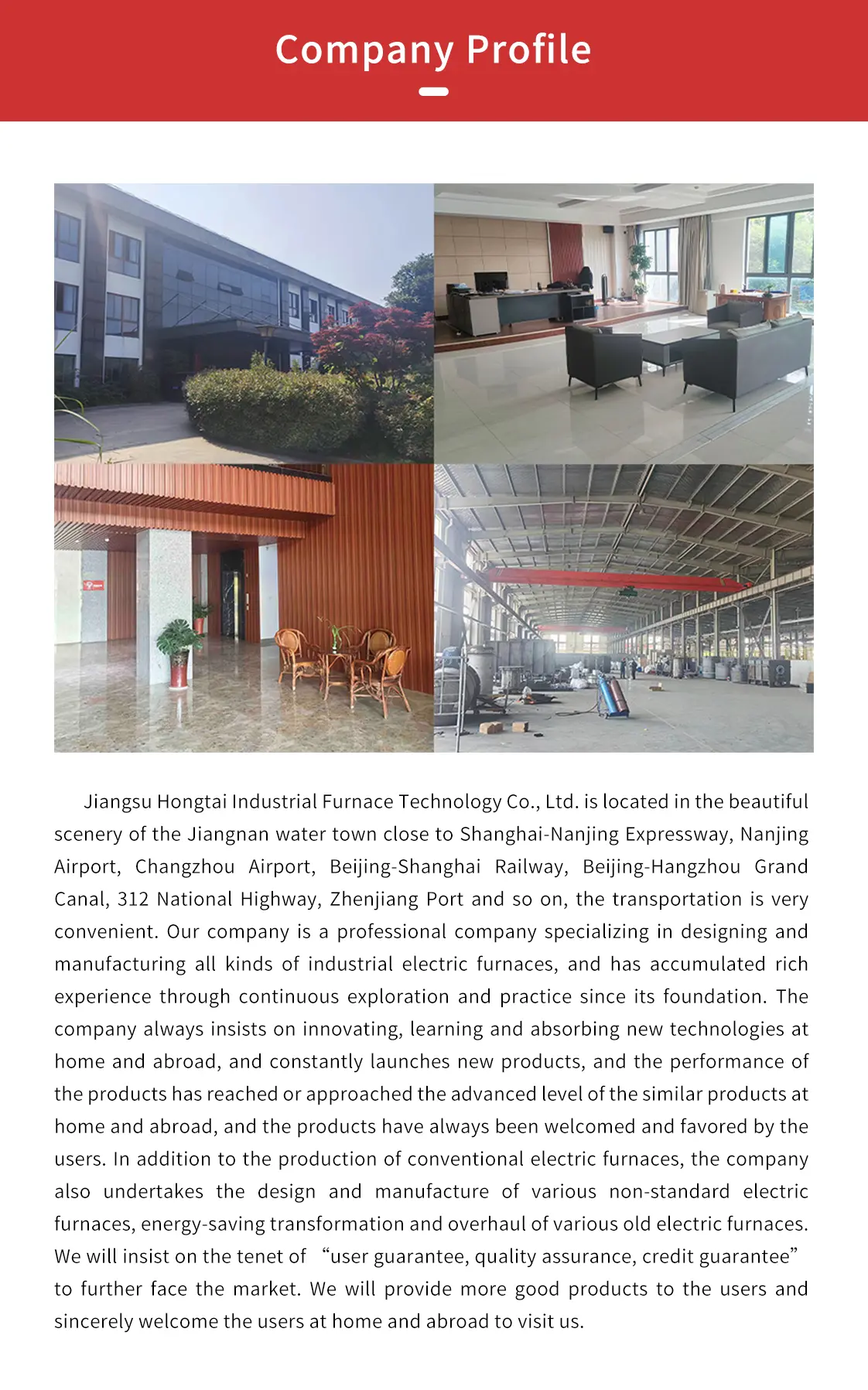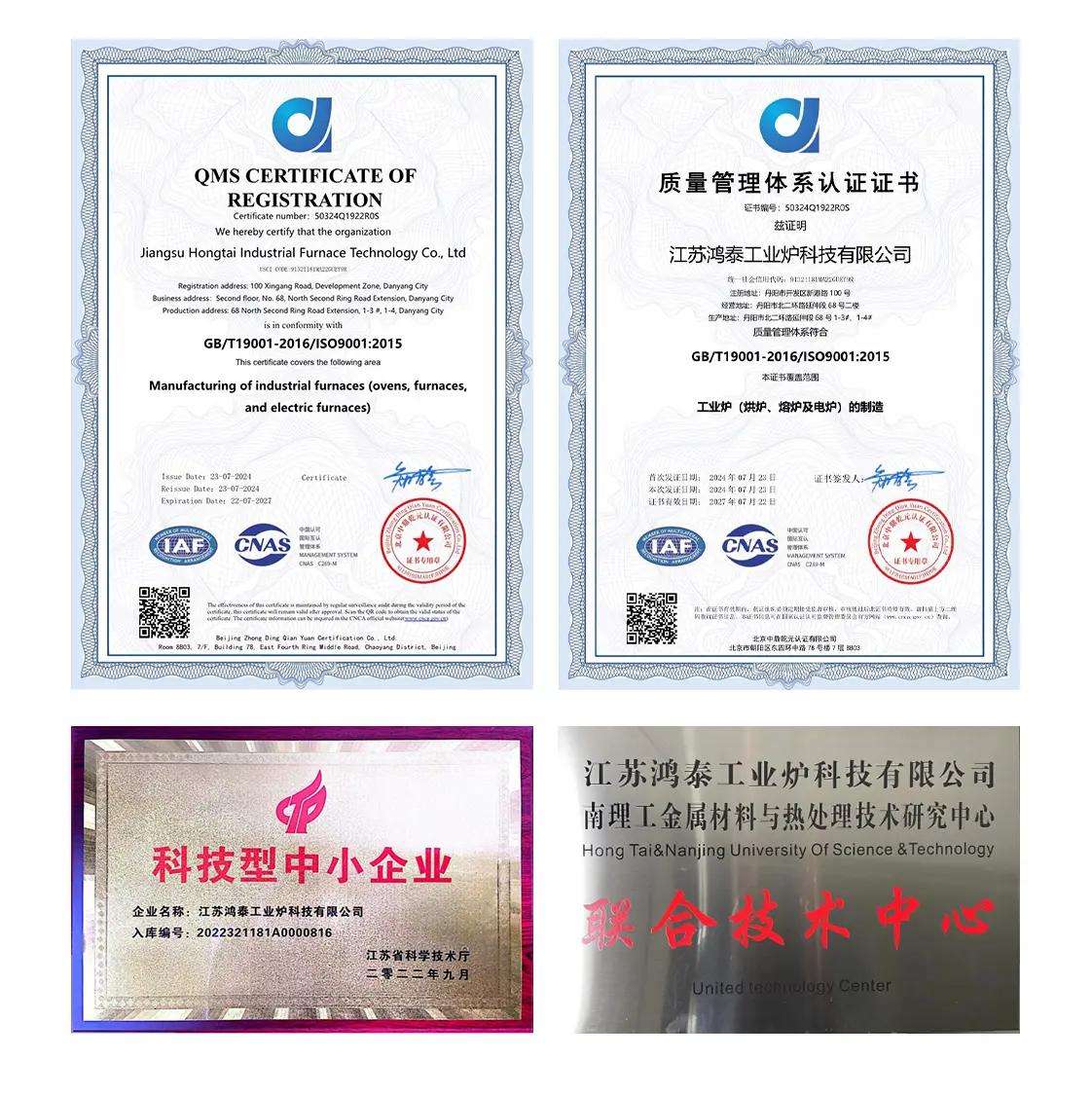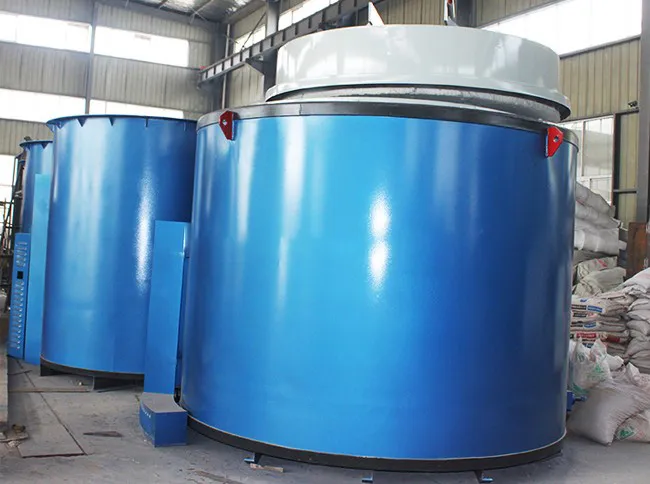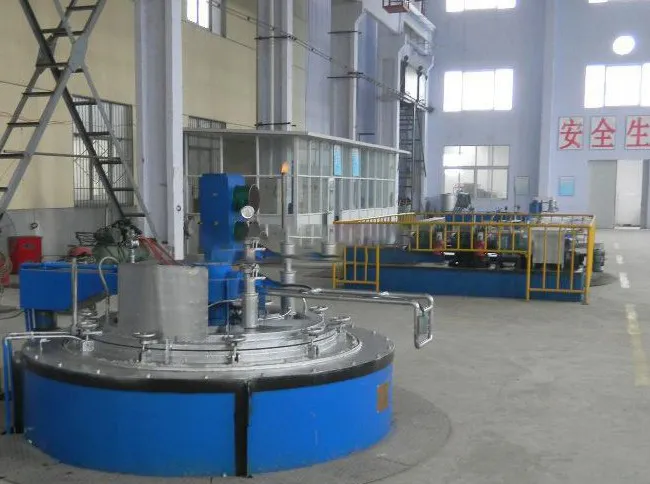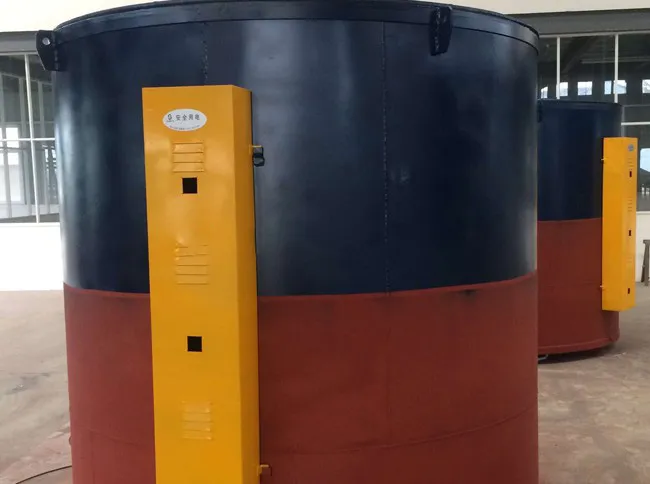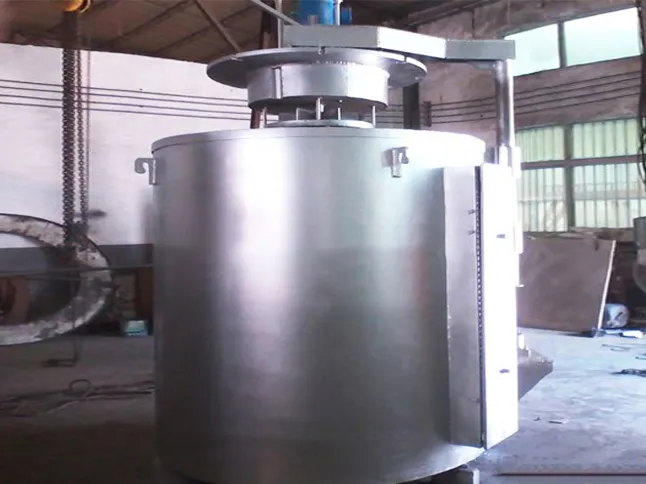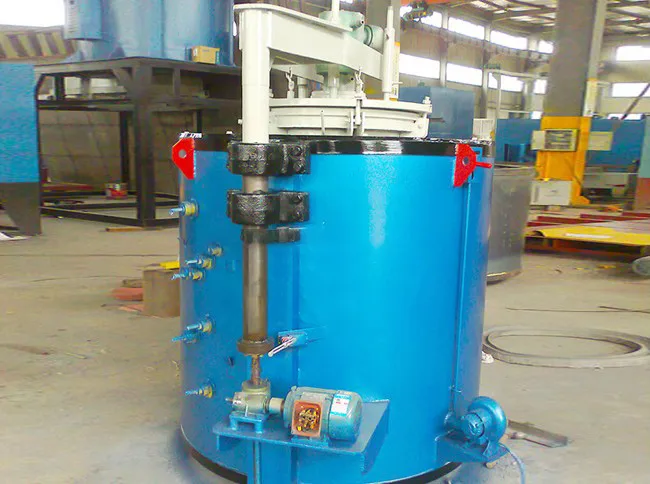- Vacuum furnace & oven
- Annealing Furnace & Oven
- Tempering furnace & oven
-
Carburizing furnace & Ovens
-
Bell Type Furnace
-
Pit Type Furnace & Well Type Furnace
-
Box Furnace & Chamber Furnace
-
Car Bottom Furnace & Bogie Hearth Furnace
-
Nitriding furnace & Ovens
-
Melting furnace & Ovens
- Quenching furnace & Ovens
-
Rapid quenching furnace & Ovens
- Forging furnace & Ovens
- Bright heat treatment furnace & Ovens
Nitriding Furnace & Ovens
Heat treatment furnace manufacturer,Jiangsu Hongtai Industrial Furnace Technology Co., Ltd
Pit-type nitriding furnace is of circular structure. The furnace body is made of refractory bricks to reduce heat loss and save energy. Pit-type nitriding furnace adopts heat-resistant steel fan, high temperature and long life.
Nitriding Furnace & Ovens
Advanced Surface Hardening Solutions for Enhanced Wear Resistance and Fatigue Strength
Product Introduction
Our Nitriding Furnaces & Ovens are state-of-the-art heat treatment systems designed for precise surface hardening of steel and other ferrous components. Nitriding is a thermochemical process that diffuses nitrogen into the surface of a metal to create a hard, wear-resistant case, significantly enhancing properties such as wear resistance, fatigue strength, and corrosion resistance. We offer various types of nitriding furnaces, including gas nitriding (using ammonia gas) and plasma nitriding (also known as ion nitriding), to cater to diverse material types and application requirements. These furnaces are crucial for manufacturing high-performance components in industries such as automotive, aerospace, tooling, and machinery, where component longevity and reliability are paramount.
Core Advantages for Superior Surface Properties
- Enhanced Wear Resistance: Creates a hard nitrided layer on the surface, significantly improving resistance to abrasive and adhesive wear.
- Increased Fatigue Strength: Introduces compressive residual stresses in the surface layer, which improves the fatigue life of components.
- Improved Corrosion Resistance: The nitrided layer provides enhanced resistance to various corrosive environments.
- Minimal Distortion: Nitriding is a low-temperature process compared to other hardening methods, resulting in minimal distortion and dimensional changes to components.
- Precise Case Depth Control: Advanced control systems allow for precise regulation of nitriding parameters, enabling accurate control over case depth and hardness profiles.
- Versatile Application: Suitable for a wide range of steel alloys, including alloy steels, tool steels, and stainless steels, for various component geometries.
- Automated & Safe Operation: Integrated PLC control with comprehensive safety interlocks, real-time monitoring, and data logging for reliable and secure operation.
Technical Specifications
| Parameter | Unit | Range/Value | Notes |
|---|---|---|---|
| Maximum Working Temperature | °C | 480 - 650 | Typical nitriding temperature range |
| Nitriding Method | - | Gas Nitriding, Plasma Nitriding | Selectable based on application and material |
| Atmosphere Control | - | Ammonia (NH3), Nitrogen (N2), Hydrogen (H2) | Precise gas flow and composition control |
| Rated Power | KW | 20 - 250 | Efficient heating systems |
| Working Chamber (W×H×L or Dia. × Depth) | mm | Customizable | Available in various sizes and configurations (pit, box, bell) |
| Temperature Uniformity | °C | ±3 (typical) | Ensures consistent nitrided layer |
| Control Accuracy | °C | ±1 | Advanced PID control |
| Case Depth Achievable | mm | 0.1 - 0.8 | Process-dependent |
| Control System | - | PLC + Touchscreen HMI | Advanced automation and data logging |
| Safety Features | - | Gas leak detection, Over-temperature protection, Emergency shutdown | Ensures safe operation |
Working Principle
Nitriding is a surface hardening heat treatment process that introduces nitrogen into the surface of steel components to form a hard, wear-resistant layer. The process typically occurs at relatively low temperatures (480°C to 650°C) to minimize distortion. There are two main types: gas nitriding and plasma (ion) nitriding.
In Gas Nitriding, components are heated in an atmosphere containing nitrogen-rich gases, most commonly ammonia (NH3). At elevated temperatures, ammonia dissociates into nitrogen and hydrogen. The nascent nitrogen atoms are absorbed by the steel surface and diffuse inwards, reacting with alloying elements (like aluminum, chromium, molybdenum) to form stable nitrides. These nitrides precipitate within the steel matrix, leading to a significant increase in surface hardness and compressive residual stresses, which improve fatigue resistance. The process parameters, such as temperature, time, and gas flow rates, are precisely controlled to achieve the desired case depth and hardness profile.
In Plasma Nitriding, components are placed in a vacuum chamber, and a low-pressure nitrogen-hydrogen gas mixture is introduced. A high voltage is applied between the furnace wall (anode) and the components (cathode), creating a plasma. Nitrogen ions within the plasma are accelerated towards the component surface, where they bombard the material, sputtering off surface atoms and activating the surface. This energetic bombardment and diffusion of nitrogen into the surface lead to the formation of nitrides and a hardened layer. Plasma nitriding offers advantages such as shorter treatment times, better control over the compound layer formation, and the ability to treat stainless steels without prior activation.
Both methods require precise control of temperature, atmosphere composition, and time to ensure optimal results. The furnaces are equipped with advanced control systems to monitor and regulate these parameters, ensuring repeatability and high-quality nitrided components.
Process Flow
Pre-treatment & Loading
Components are cleaned and prepared, then loaded into the nitriding furnace chamber.
Purging & Atmosphere Introduction
Chamber is purged to remove air, then nitriding atmosphere (e.g., ammonia for gas nitriding, N2/H2 for plasma) is introduced.
Heating & Nitriding Cycle
Components are heated to nitriding temperature, and the nitriding process occurs for a specified duration.
Cooling & Unloading
Controlled cooling within the furnace, followed by safe unloading of nitrided components.
Solving Customer Pain Points
Achieving Superior Wear Resistance
Our nitriding furnaces produce a hard, wear-resistant surface layer, significantly extending the lifespan of components subjected to friction and abrasion, reducing replacement costs.
Improving Component Fatigue Life
The compressive residual stresses induced by nitriding enhance the fatigue strength of parts, making them more resilient to cyclic loading and preventing premature failure.
Minimizing Distortion and Dimensional Changes
As a low-temperature process, nitriding causes minimal distortion, eliminating the need for costly post-treatment machining and ensuring dimensional stability of precision components.
Enhancing Corrosion Resistance
The nitrided layer provides improved resistance to various corrosive media, offering an effective solution for components operating in harsh environments.
Ensuring Process Repeatability and Quality Control
Advanced PLC control systems allow for precise parameter management and data logging, ensuring consistent and repeatable nitriding results for high-quality production.
Versatility for Diverse Material and Component Types
Our furnaces are capable of nitriding a wide range of steel alloys and component geometries, providing flexible solutions for various industrial applications.
Customer Success Stories
A leading manufacturer of automotive gears achieved a 25% increase in gear lifespan and a significant reduction in warranty claims after implementing our gas nitriding furnace, demonstrating superior wear and fatigue performance.
Customized Services
We offer comprehensive customization services for our nitriding furnaces, including tailored chamber dimensions, specific nitriding methods (gas or plasma), and integration with existing production lines. Our engineering team works closely with clients to design solutions that precisely meet their unique material types, component sizes, and desired surface property requirements, ensuring optimal performance and seamless integration into their heat treatment processes.
Related Keywords
nitriding furnace, gas nitriding oven, plasma nitriding furnace, ion nitriding, surface hardening, steel heat treatment, wear resistance, fatigue strength, corrosion resistance, ammonia nitriding, controlled atmosphere furnace, case hardening, metallurgical equipment
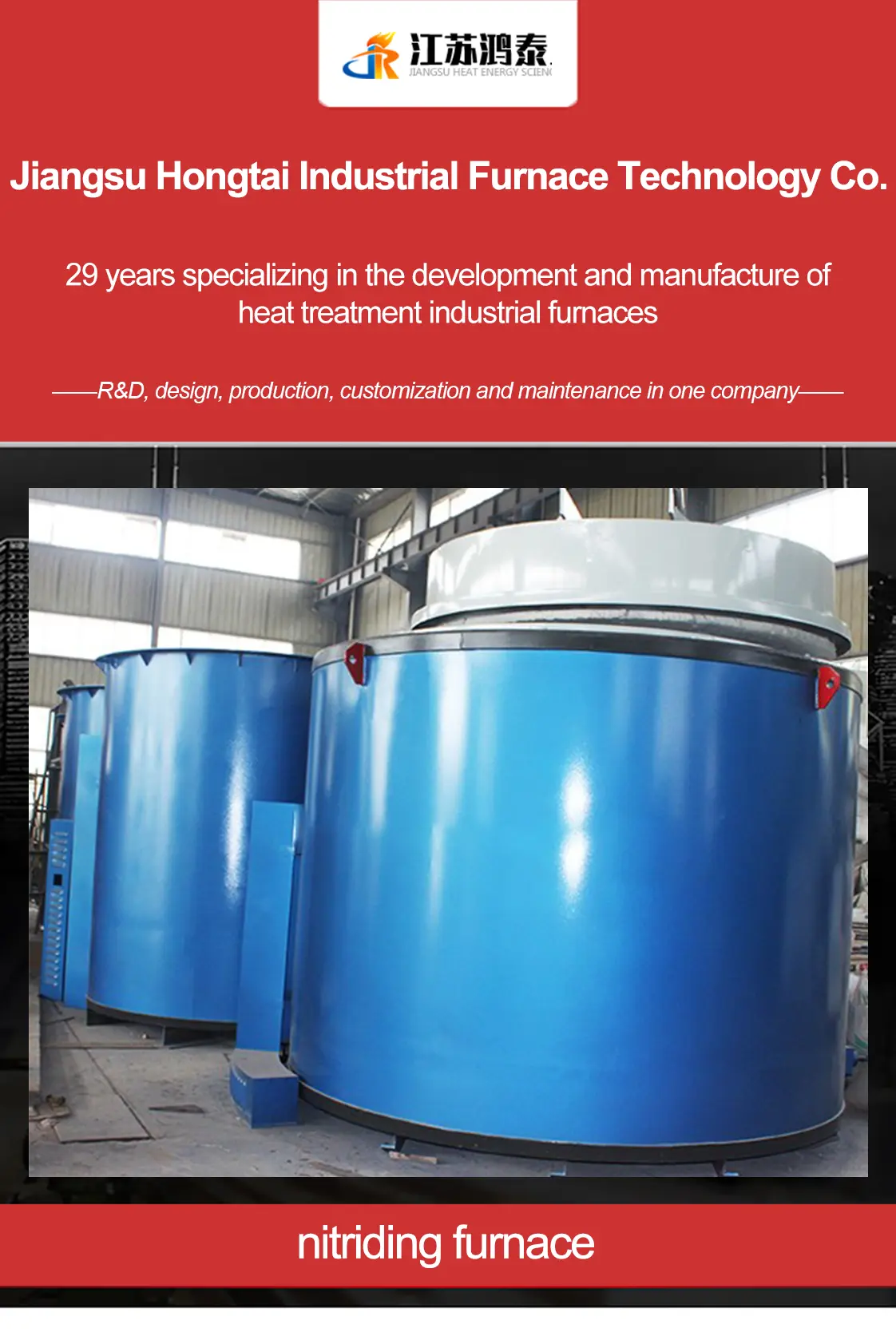
Industrial Value and Application Products
- Gears and Shafts: Used in automotive, aerospace, and industrial machinery to improve wear resistance and fatigue strength.
- Dies and Molds: Extrusion dies, forging dies, and plastic injection molds benefit from increased surface hardness and resistance to abrasive wear.
- Engine Components: Valves, crankshafts, and camshafts in internal combustion engines for enhanced durability.
- Firearms Components: Barrels, receivers, and other parts requiring high wear resistance and corrosion protection.
- Medical Instruments: Surgical tools and implants that need to be highly durable and corrosion-resistant.
Pit-type nitriding furnace is of circular structure. The furnace body is made of refractory bricks to reduce heat loss and save energy. Pit-type nitriding furnace adopts heat-resistant steel fan, high temperature and long life.
Pit-type nitriding furnace adopts electric heating method, the temperature of heating chamber, ammonia decomposition rate and other heat treatment parameters are dynamically controlled by high-precision instruments and sensors, with high precision and stable parameters. The pit-type nitriding furnace of Fengdong Heat Treatment adopts electric screw elevator structure, water-cooled jacket and silicone rubber sealing device to ensure that the gas in the furnace does not leak out. The nitriding furnace adopts the design of zone heating, dividing the furnace body into two zones, upper and lower, for heating. Pit-type nitriding furnace through the medium flow control system and furnace pressure detection device control; furnace atmosphere and pressure to ensure that the process parameters.
Application of Pit-type Gas Nitriding Furnace
Pit-type gas nitriding furnace is mainly used for gas nitriding of carbon steel parts, mold quenching and other heat treatment purposes. The equipment is equipped with a drip device, can also be gas nitriding carbonitriding (soft nitriding) treatment. It can be used as a general pit-type tempering furnace when ammonia gas and dripping device are not used.
